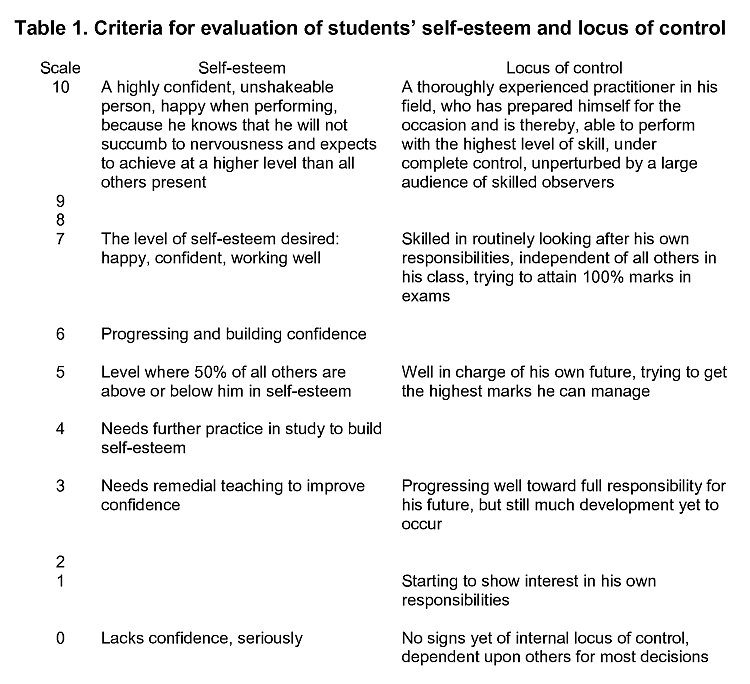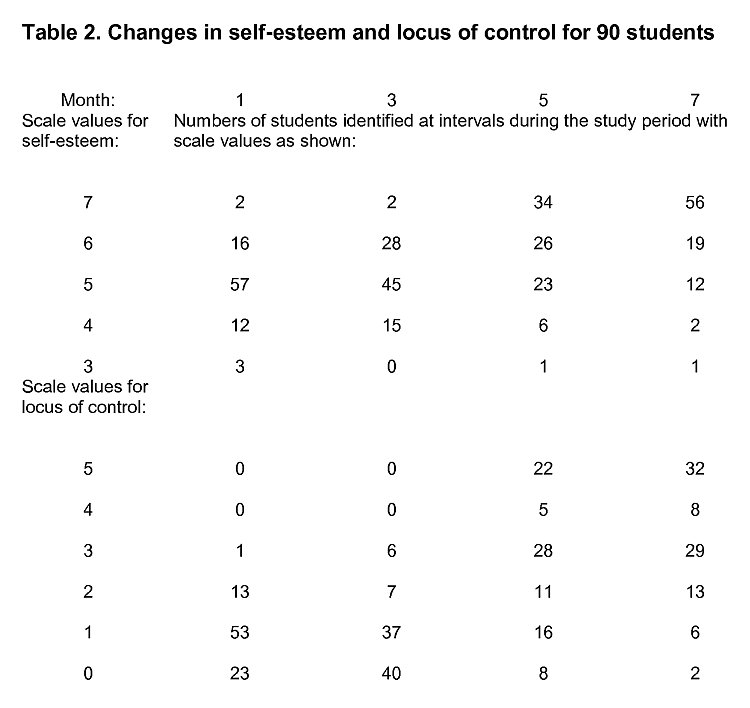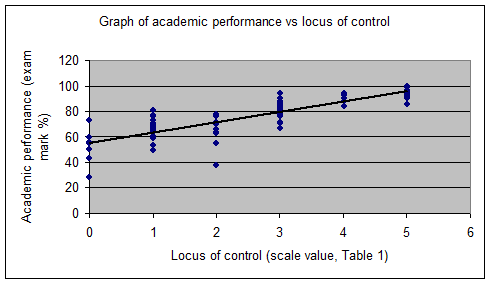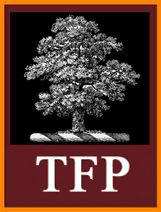Epigenetic Activity in Adolescents 7
An Intervention to Benefit Health and Education
– Geoff M. Ayling Qianhuang International College, No.6 Guang Dian Dong Road, Changzhou, Jiangsu, 213161, China: email address: geoff.ayling@theforrestproject.org
– Rose Harland Qianhuang International College
– John V. Shindler Charter College of Education, California State University at Los Angeles
– Qian Xuefeng Qianhuang International College
Abstract:
Epigenetic activity in embryogenesis is known to result in metabolic syndrome diseases and cancers in adult life. Maternal care has been shown to epigenetically mediate the stress response. When unsuccessful, repeated long-term release of glucocorticoids can lead to atrophy of the hippocampus, loss of memory and learning ability, hypertension, cardiovascular disease, diabetes, immune dysfunctions and mental illness in adult life. Interventions are being sought to overcome health risks from aberrant epigenetic activity. Here an intervention trial is reported, in which 90 students were assisted to enhance their self-esteem and internal locus of control, critical components of the stress response. The intervention was found to be routinely practicable, with students’ stress responses, learning and memories improved. It should lead to a reduction in diseases in adult life. Insufficient development should no longer handicap students’ education. When operational, significant sociological and economic benefits should result from overcoming the worldwide breakdown in education.
Keywords: social epigenetic factor, adolescent, self-esteem, locus of control, hippocampus, stress response, breakdown in education.
Interventional strategies are being sought to avert health risks and diseases resulting from aberrant epigenetic activity. This has become the principal objective for many research groups.
The potential for epigenetic activity to be reversed through dietary intervention, was clearly demonstrated when the activated hippocampal exon 17 glucocorticoid receptor promoter was found to be hypermethylated by L-methionine. In this instance a dietary supplement reversed the epigenetic activation of a gene.
In order to understand the relationship between dietary interventions, proteome changes and cancer, Milner concluded that it was necessary for functional proteomic studies to account for all proteins produced by a species and to link their physiological significance within the cell. This information would then make possible approaches to reduce dietary cancer risk and tumour behaviour. However, the different processes that occur following transcription also need to be well understood. Protein products must be in compatible forms to enable a relationship to occur with a particular food component. There must occur a coincidence of favourable molecular changes among the proteomes. For a particular food component to ultimately influence a number of key molecular events involved in cancer prevention, it must be present in an effective concentration at a target site, as well as in the correct metabolic form in association with one or more small molecular weight signals in a cell.
The need for interventions to be identified has become increasingly urgent following investigations of epigenetic activity during embryogenesis and the post-natal period.
In embryogenesis, maternal nutrition and habits were reported by Gluckman and Hanson to result in type-2 diabetes, obesity, hypertension, cardiovascular disease and cancers of epigenetic origin. The foetus incurs the risk when adaptive responses form during the first trimester of pregnancy, predicting a future environment based upon the mother’s nutrition, which can be quite different from that actually experienced. It was concluded that unbalanced nutrition in early life could with further research, lead to the development of intervention strategies. Grave concern is now held for large populations in India and China, which are rapidly entering different socioeconomic conditions, with changes to their patterns of nutrition and lifestyle.
Groups of researchers have been active in the search for interventions to avert this particular epidemiological risk, which is on a scale rarely encountered.
Waterland and Jirtle sought to identify early life nutritional interventions and corrective therapies. They proposed that genomically imprinted genes and specific transposon insertion sites, particularly susceptible to chronic adult diseases, should be investigated. Dietary supplements such as folic acid, vitamin B, choline and betaine, were used to target transposable elements, only to find that folic acid altered the phenotype of mice offspring, conferring epigenetic metastability. These investigators became the first to use an in vivo model, to demonstrate that nutrition during development could induce persistent changes in the epigenetic regulation of genomically imprinted genes. They also obtained the first evidence that in utero dietary genistein would affect gene expression and alter susceptibility to obesity in adulthood, through permanently altering the foetal epigenome. Jirtle et al subsequently showed that early developmental exposure to the well-known carcinogen bisphenol A, could change the phenotype of offspring by stably altering the epigenome, an effect that could be counteracted by maternal dietary supplements.
Finally, this group found the genes that result in cancer, which were most prone to epigenetic dysregulation, were insufficiently defined. Neither the environmental factors that affect the epigenome, nor the critical windows of vulnerability to induce epigenetic alterations, had been adequately characterized. They were therefore unable to account for the growing evidence of disparities in gene expression, which played a role in differential susceptibility to this disease. This line of investigation was concluded to be fundamentally handicapped.
Other researchers have reviewed recent advances in the therapeutic modification of epigenetic marks, which may lead to the design of new therapies for age-related disorders including cancer, autoimmune disorders and others. In the case of maternal care however, which epigenetically programmes mediation of the stress response in offspring, there appear to exist a number of possible intervention strategies. Interventions may be possible from not only dietary but behavioural environmental factors.
Maternal care in early life has been shown by Meaney et al to mediate the stress response, through activation of the hippocampal exon 17 glucocorticoid receptor promoter. Glucocorticoid feedback blocks synthesis and release of the corticotropin-releasing factor, reducing hypothalamus-pituitary-adrenal responses to stress. It is necessary to achieve a reduction in the release of glucocorticoids from the hippocampus under stress. Repeated, long-term release leads in adult life to atrophy of the hippocampus, hypertension, heart disease, diabetes, immune dysfunctions and mental illness. Impairment of the hippocampus initially leads to loss of memory and learning ability.
The epigenetic mechanism has been shown by this group to occur with differential effectiveness, depending upon the level of care shown by the mother under adversity. This can to some extent be overcome through more effective maternal care involving a further gene, the nerve growth factor-inducible protein A transcription factor, bound to the exon 17 glucocorticoid receptor promoter within the hippocampus. The group is also studying the influence of maternal behaviours on the gamma-amino butyric acid receptor system, which is of critical importance to the expression of behavioural and endocrine responses to stress.
The maternal adversity vulnerability and neurodevelopment (MAVAN) project has now been commenced. It is a study of the effects incurred by populations as a result of differential maternal care. Interventions are expected to result, which may optimise health prospects for children from early childhood until well into adult life.
Self-esteem and internal locus of control have also been shown by Meaney et al to mediate the stress response. Low self-esteem has otherwise been associated with numerous negative life outcomes, including substance abuse, delinquency, unhappiness, depression, eating disorders and worsened recovery after illnesses. These characteristics had earlier been found to predict the ability to habituate to repeated psychosocial stress, with subjects with low levels of self-esteem and low internal locus of control showing continuous high cortisol stress responses. They were predictive of an individual’s neuro-endocrinological reactions to stressful social situations. In a mentally challenging task, only subjects with low self-esteem and low levels of internal locus of control exhibited a significant cortisol response. Enhanced self-esteem and internal locus of control have most recently been shown by this group to reduce the requirement for the hippocampus to release the neuro-endocrine cortisol. An intervention appeared to exist through the enhancement in adolescents of self-esteem and internal locus of control, which would result in mediation of the stress response and avert longer-term health effects.
The aim of this study was to trial the intervention, ascertaining the feasibility of routinely assisting adolescent students to enhance their self-esteem and internal locus of control and in so doing, improve their learning and memory.
Methods:
Ninety 18-year old students enrolled to study university-entrance subjects were selected for the trial. Enhancement of self-esteem and internal locus of control was undertaken simultaneously with a traditional teaching and learning approach for the study of physics.
The program of enhancement involved the development in students of behaviours that provide a practical means of enhancing self-esteem: locus of control, acceptance-belonging and self-efficacy.
Internal locus of control was enhanced through promoting a clear understanding of cause and effect within the student. Each individual needed to see that achievement for which he was accountable, was directly related to his level of effort.
Acceptance and belonging were fostered among students through the behaviours that were accepted, assessed and managed, together with the attitudes and values that create reality in classrooms.
Sense of self-efficacy was generated from evidence that confirmed to a student that he had done something well.
Monitoring of self-esteem and locus of control was based upon estimations by a teacher, using behavioural criteria as shown in Table 1. Students’ study notebooks and formal testing provided the basis for estimating the development of each student.
Results and Discussion:
The students appeared at the outset as shown in Table 2, to have had lower levels of self-esteem and internal locus of control, which increased significantly during the course of study. This suggested that their stress response levels had been mediated during the study period.
Clear relationships are shown in Figures 1 and 2 between academic performance, self-esteem and internal locus of control. This was expected following earlier reports of correlations between academic performance and self-esteem and internal locus of control. The figures also indicate that the learning and memory abilities of these students were increased in nearly all cases.
Shindler has noted that the techniques for enhancing these characteristics are well known, yet through lack of understanding are not routinely practised. The trial confirmed that the intervention was both feasible within a school context and routinely practicable.
It is concluded that self-esteem and internal locus of control may in this way be changed by a teacher, in order to assist students to achieve higher academic performances. As a result of this process a teacher may assist the growth and functioning of the hippocampus of each student. This has not been reported before.
The implications of these findings are significant. Reduction in the stress response, accompanied by an improvement in the functioning of the hippocampus, indicate that this intervention may very likely reduce the risk in adult life of impaired learning and memory, metabolic syndrome diseases and certain cancers. A teacher’s routine enhancement of self-esteem and internal locus of control may therefore be regarded as a component of preventative medicine, which benefits the health of adolescents.
This intervention could also be considered to be an act of essential developmental assistance for adolescents. Such assistance concurs fully with the theories of human development of Ericksonand Chickering. The importance of assisting adolescents to progress through important stages of their development has been stressed by education psychologists. A well known researcher, LeCapitaine has commented ‘of what good is it to graduate the mind but to lose the person?’ Many researchers have complained that education authorities have for too long failed to heed the need to assist children to develop.
Numerous writers have described the breakdown of high schools, as having tragic sociological consequences for families and a significant factor in the economic progress of the United States and other countries. The breakdown appears to result from the failure of students to achieve sufficient development to cope with educational studies. Millions of families each year witness a student child unable to obtain an education and hence, a career path that should be followed. There are as a result insufficient numbers of students coming through high schools and entering universities to study technology and the sciences.
Conclusion:
The trial of this intervention to mediate the stress response, through a teacher routinely enhancing the self-esteem and internal locus of control of students, is both feasible and practicable. The intervention can avert significant health risks for adolescents and as well, offers educational, sociological and economic benefits, on a scale that can be described as of national significance.
Table 1. Criteria for evaluation of students’ self-esteem and locus of control
Table 2. Changes in self-esteem and locus of control for 90 students
Figure 1. Graph of academic performance vs self-esteem
Figure 2. Graph of academic performance vs locus of control




References:
- Weaver, I. C. G., Champagne, F. A., Brown, S. E., Dymov, S., Sharma, S., Meaney, M. J. and Szyf, M. Reversal of maternal programming of stress responses in adult offspring through methyl supplementation: altering epigenetic marking later in life.J Neurosci25, 11045-11054 (2005).
- Milner, J. A. Diet and cancer: facts and controversies.Nutrition and Cancer56(2), 216-224 (2006).
- Gluckman, P. D. and Hanson, M. A.Living with the past: evolution, development, and disease.Science 305, 1733-1736 (2004).
- Gluckman, P. D. and Hanson, M. A. The developmental origins of the metabolic syndrome.Trends Endocrinol Metab.15, 183-187 (2004).
- 5.Gluckman, P. D. and Hanson, M. A. The Fetal Matrix – Evolution, Development and Disease (Cambridge University Press, Cambridge, UK, 2005).
- Hanson, M. A. and Gluckman, P. D. Developmental processes and the induction of cardiovascular function: conceptual aspects.J Physiol.565(1), 27-34 (2005).
- Burdge, G. C., Hanson, M. A., Slater-Jeffries, J. L. and Lillycrop, K. A. Epigenetic regulation of transcription: a mechanism for inducing variations in phenotype (foetal programming) by differences in nutrition during early life?British Journal of Nutrition 97, 1036-1046 (2007).
- Godfrey, K. M., Lillycrop, K. A., Burdge, G. C., Gluckman, P. D. and Hanson, M. A. Epigenetic mechanisms and the mismatch concept of the developmental origins of health and disease.Pediatric Research61(5, Part 2) Suppl 5R-10R (2007).
- Waterland, R. A. and Jirtle, R. L. Transposable elements: targets for early nutritional effects on epigenetic gene regulation.Molecular and Cell Biology23(15), 5293-5300 (2003).
- Waterland, R. A. and Jirtle, R. L. Early nutrition, epigenetic changes at transposons and imprinted genes, and enhanced susceptibility to adult chronic diseases.Nutrition20, 63-68 (2004).
- Waterland, R. A., Lin, J. R., Smith, C. A. and Jirtle, R. L. Association Post-weaning diet affects genomic imprinting at the insulin-like growth factor 2 (Igf2) locus human.Molecular Genetics 15, 705-716 (2006).
- Dolinoy, D. C., Weidman, J. R., Waterland, R. A. and Jirtle, R. L. Maternal genistein alters coat colour and protects Avymouse offspring from obesity by modifying the foetal epigenome.Environ Health Perspect 114(4), 567-572 (2006).
- Dolinoy, D. C., Huang, D. and Jirtle, R. L. Maternal nutrient supplementation counteracts bisphenol A-induced DNA hypomethylation in early development.Proc. Natl. Acad. Sci.104, 13056-13061 (2007).
- Weidman, J. R., Dolinoy, D. C., Murphy, S. K. and Jirtle, R. L. Cancer susceptibility: epigenetic manifestation of environmental exposures.Cancer J. 13, 9-16 (2007).
- Lu, Q., Qiu, X., Hu, N., Wen, H., Su, Y. and Richardson, B. C. Epigenetics, disease and therapeutic interventions.Ageing Research Reviews5(4), 449-467 (2006).
- Meaney, M. J. Maternal care, gene expression and the transmission of individual differences in stress reactivity across generations.Annu. Rev. Neurosci.4, 1161-1192 (2001).
- Weaver, I. C. G., Cervoni, N., Champagne, F. A., D’Alessio, A. C., Sharma, S., Seckl, J. R., Dymov, S., Szyf, M. and Meaney, M. J. Epigenetic programming by maternal behaviour.Nature Neuroscience 7, 847-854 (2004).
- Laplante, D. P., Barr, R. G., Brunet, A., Galbaud du Fort, G., Meaney, M. J., Saucier, J-F., Zelazo, P. R. and King, S. Stress during pregnancy affects intellectual and linguistic functioning in human toddlers.Pediatric Research 56, 400-410 (2004).
- Menard, J., Champagne, D. and Meaney, M. J. Variations of maternal care differentially influence ‘fear’ reactivity and regional patterns of cFos immunoreactivity in response to the shock-probe burying test.Neuroscience129, 297-308 (2004).
- Parent, C., Zhang, T. Y., Caldji, C., Bagot, R., Champagne, F. A., Pruessner, J.and Meaney, M. J. Maternal care and individual differences in defensive responses.Current Directions in Psychological Science14, 229 (2005).
- Cameron, N. M., Champagne, F. A., Fish, C. P. E. W., Ozaki-Kuroda, K. and Meaney, M. J. The programming of individual differences in defensive responses and reproductive strategies in the rat through variations in maternal care.Neuroscienceand Biobehavioral Reviews 29, 843 (2005).
- Weaver, I. C. G., D’Alessio, A. C., Brown, S. E., Hellstrom, I. C., Sharma, S., Szyf, M. and Meaney, M. J. The transcription factor nerve growth factor-inducible protein A mediates epigenetic programming: altering epigenetic marks by immediate-early genes.J Neurosci27(7), 1756-1768 (2007).
- Caldji, C., Diorio, J. and Meaney, M. J. Variations in maternal care alter GABA(A) receptor subunit expression in brain regions associated with fear.Neuropsychopharmacology28, 1950 (2003).
- Leonhardt, M., Matthews, S. G., Meaney, M. J. and Walker, C-D. Psychological stressors as a model of maternal adversity: diurnal modulation of corticosterone responses and changes in maternal behaviour.Hormones and Behaviour51(1), 77-78 (2007).
- Hoyle, R., Kernis, M. H., Leary, M. R. and Baldwin, M. W.Selfhood: Identity, Esteem, Control(Westwood, Boulder, 1999).
- Leary, M. R. and McDonald, G.Individual Differences in Self-esteem: a Review and Theoretical Integration.In (Leary, M. R. and Tangney, J. P. eds., Handbook of Self and Identity, pp 401-420,(Guilford Press, New York, 2003).
- Kirschbaum, C., Prussner, J. C. and Stone, A. A. Persistent high cortisol responses to repeated psychological stress in a sub-population of healthy men.Psychosom. Med.57, 468-474 (1995)
- Pruessner, J. C., Hellhammer, D. H. and Kirschbaum, C. Low self-esteem, induced failure and the adrenocortical stress response.Pers. Indiv. Differ.27, 477- 489 (1999).
- Pruessner, J. C., Baldwin, M. W., Dedovic, K., Renwick, R., Mahani, N. K., Lord, C., Meaney, M. J. and Lupien, S. Self-esteem, locus of control, hippocampal volume, and cortisol regulation in young and old adulthood.Neuroimage28, 815 (2005).
- Pruessner, J. C., Lord, C., Meaney, M. J. and Lupien, S. Effects of self-esteem on age-related changes in cognition and the regulation of the hypothalamic-pituitary-adrenal axis.Biobehavioral Stress Response: Protective and Damaging Effects1032, 186 (2004).
- Shindler, J. V. Creating a psychology of success in the classroom: enhancing achievement by systematically promoting students’ self-esteem (1998).
- Solley, C. M. and Stagner, R. Effect of magnitude of temporal barriers, types of perception of self.Journal of Experimental Psychology 51, 62-70 (1956).
- Klein, J. D. and Keller, J. M. Influence of student ability,locus of control, and type of instructional control on performance and confidence. Journal of Educational Research 83(3), 140-146 (1990).
- Rennie, L. J. The relationship between affect and achievement in science.Journal of Research in Science Teaching28(2), 193-209 (1991).
- Lester, D. Cooperative/competitive strategiesand locus of control.PsychologicalReports 71, 594 (1992).
- Wang, M. and Stiles, B. An investigation of children’s concept of self-responsibility for their learning.American Educational Research Journal 13, 159-179
- Bar-Tal, D. B.and Bar-Zohar, Y. The relationship between perception of locus of control and academic achievement.Contemporary Educational Psychology2, 181-199 (1977). (1976).
- Erikson, E. H.Childhood and Society(Norton, New York, 1950).
- Erikson, E. H. The problem of ego identity.Journal of American Psychoanalytic Association4, 56-121 (1956).
- Erikson, E. H.Identity and the Life Cycle (International Universities Press, New York, 1959).
- Chickering, A. W.Education and Identity(Josey-Bass, San Francisco, CA, 1969).
- Par, G. and Ostrovsky, M. The role of moral development in deciding how to counsel children and adolescent.The School Counselor39, 14-19 (1991).
- Swafford, S. and Bryan, J. Instructional strategies for promoting conceptual change: supporting middle school students.Reading and Writing Quarterly16(2), 139-162 April-June (2000)
- LeCapitaine, J.Promoting personal and psychological development in children: of what good is it to graduate the mind but to lose the person?Education121(3), 459-470 Spring (2001).
- Eggen, P. and Kauchak, D.Educational Psychology, Windows on Classrooms(6th ed) (Pearson Prentice Hall, Upper Saddle River, NJ, 2004).
- ACT, Crisis at the Core: Preparing All Students for College and Work, Iowa City, IA (2004).
- Achieve Inc, Rising to the Challenge: Are High School Graduates Prepared for College and Work? Washington, DC (2005).
- Educational Testing Service, One-Third of a Nation: Rising Dropout Rates and Declining Opportunities. Princeton, NJ (2005).
- Achieve Inc and the National Governors Association, An Action Agenda for Improving America-acirc;-euro;-trade;s High Schools. Washington, DC (2005).
- Perkins-Gough, D. Special Report/Fixing High Schools.Educational Leadership62(7), 935-937 April (2005).
Competing interests statement
The author declares no competing financial interests.
